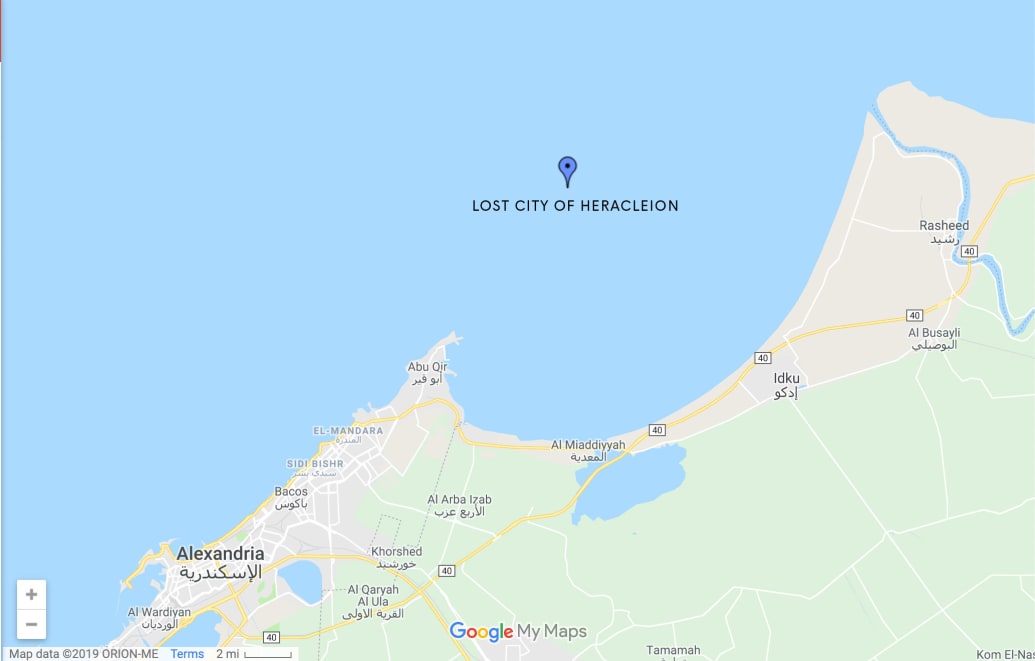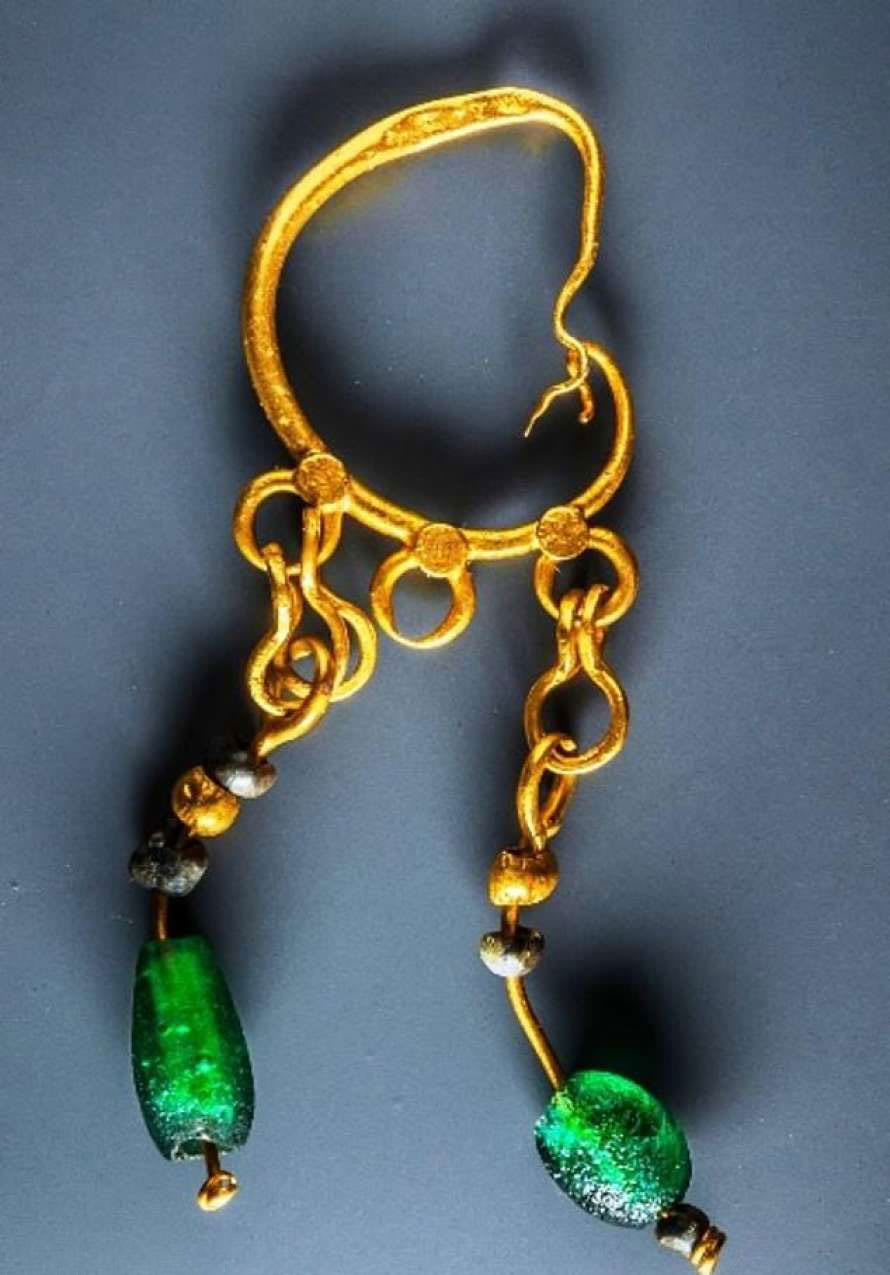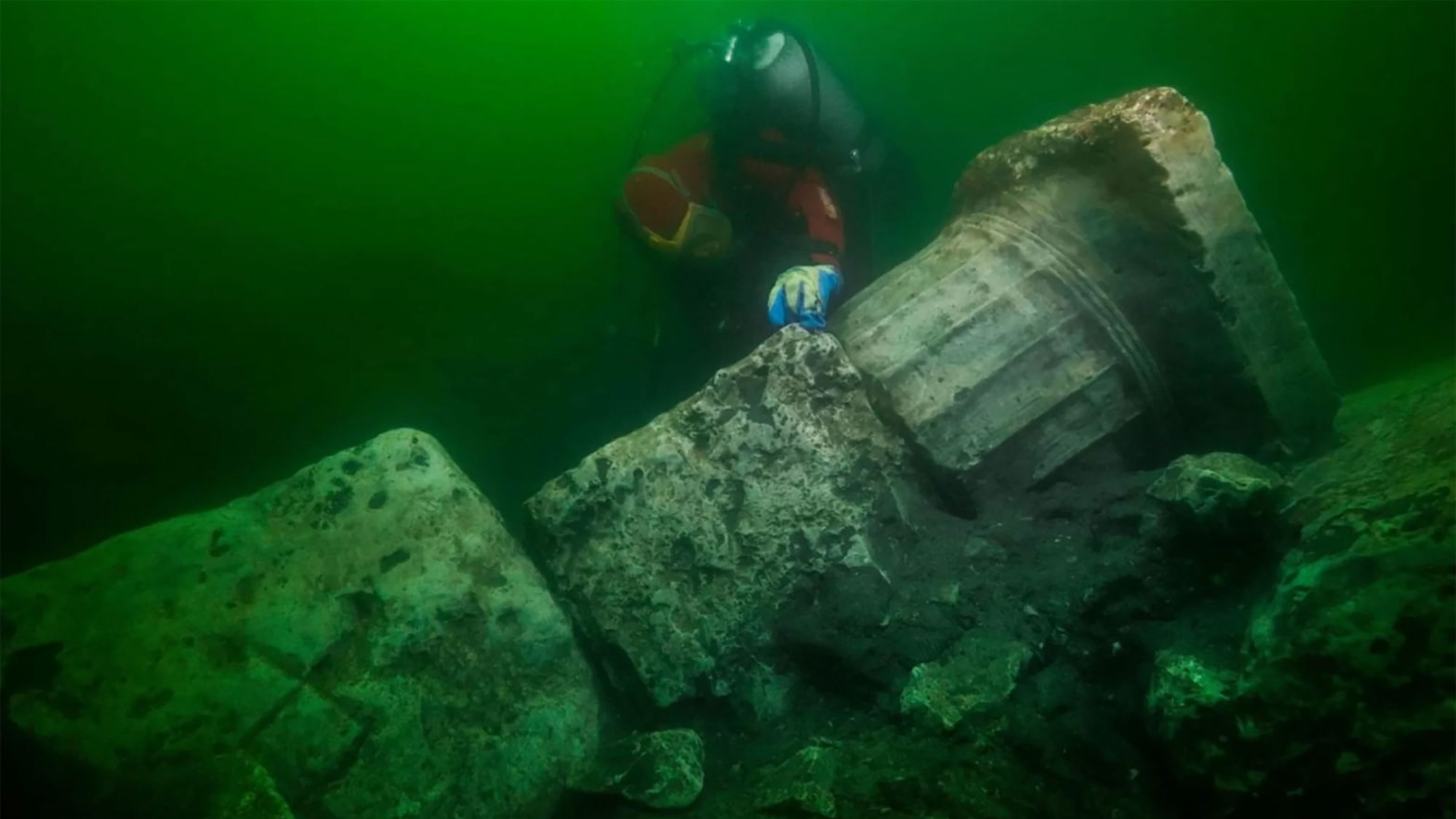https://www.thedailybeast.com/heracleion-treasure-trove-discovered-at-egypts-atlantis
In Plato's Critias the fictional city of Atlantis—a rival to ancient Athens—was cursed by the gods, besieged by earthquakes and floods, and disappeared into the ocean. For centuries, people wrote pseudo-histories about the ancient city and its supposed location. According to Stanford professor Dan Edelstein, some of the theories about Atlantis even provided fodder for Nazi mythology. But for all of the interest it generated, Atlantis never actually existed. There were, however, places that suffered its fate.
In 1933 British RAF Group-Captain Cull was flying his plane over Aboukir, a Royal Air Force base east of Alexandria in Egypt, when he glimpsed something in the water below him. From his vantage point, Cull could make out the outlines of structures beneath the water. Unbeknownst to him, Cull had located Heracleion, an important ancient Egyptian city that had lain hidden beneath the water for nearly 1500 years.
According to legend, this lost metropolis had hosted its namesake, Heracles, and lovers Paris and Helen before they fled to Troy. Cleopatra, Egypt's most famous queen, had even been crowned in one of the temples there.
Before its discovery, Heracleion (which was also known in the ancient world by its Egyptian name, Thonis) was almost the stuff of mythology. Though it is now buried several miles off the coast, Thonis-Heracleion was once a thriving port city. If you were bringing goods into Egypt, this is where your items would be taxed and inspected. The focal point of the city was a huge temple dedicated to the god Amun-Gereb, around which a network of canals snaked and flowed. In between them small islands housed residences, religious sites, and commercial buildings, almost like an ancient Venice.

Photo Illustration by The Daily Beast/Google Maps
By the fifth century, Heracleion was no more, its role as Egypt's main port having been assumed by Alexandria in the second century. According to written records, a steady succession of earthquakes, perhaps as many as 23, struck North Africa between A.D. 323-1303. The most severe occurred in A.D. 365. The coastline fell and the cluster of cities that lay in the Canopic branch of the Nile vanished into the Mediterranean.
Even before Cull flew over Heracleion, there had been rumors of underwater ruins for over a century. In 1866 Mahmoud Bey El-Falaki, the official astronomer to the Viceroy of Egypt, had published a map that located the nearby ancient town of the Canopus on the edge of the coastline. But it took nearly 70 years to identify and excavate the area. It was only in 1996, when a team of Egyptian and European archaeologists, working under the leadership of Franck Goddio, founder of the Institut Européen d'Archéologie Sous-Marine, began to truly explore the uncharted waters of the ancient port. It took years to locate Heracleion itself: the team had to start from scratch surveying the seabed, taking soil samples, and collecting geophysical information in an effort to locate archaeological remains.
The time and effort paid off. During an underwater expedition in 2000, divers saw a large stone head emerge from the murky dark waters. It was the head of the god Hapi, the personification of the Nile's annual flood. Speaking to Archaeology.org in 2000, Goddio described the city of Heracleion as "an intact city, frozen in time." It was almost like a sub-marine Pompeii.
In the past few months divers at Heracleion have discovered what can only be described as a treasure trove of artifacts from the site. Among the recent discoveries are gold jewelry, coins, and a missing piece of a large ceremonial boat that, when complete, measured 43 feet in length and 16 feet across. According to Egypt's Ministry of Antiquities, they also discovered two previously unearthed temples: the first was large and included stone columns while the second, smaller temple was crumbling and buried beneath 3 feet of sediment. Goddio and his team discovered the artifacts by using sophisticated underwater scanning tools that can locate and produce images of items buried under the seabed.
To date the excavation has also uncovered 700 anchors, 64 ships, numerous other gold coins, tiny sarcophagi used for the animals that were sacrificed to Amun-Gereb, a number of colossal statues like that of Hapi, and the temple of Amun-Gereb itself.
Many of the coins found at Heracleion date to the time of King Ptolemy II, who ruled Egypt from 283 to 246 B.C.. Ptolemy II's father had been a companion and bodyguard of Alexander the Great and he participated in Alexander's military campaigns in Afghanistan and India. Some have even claimed that Ptolemy I was Alexander's half-brother. After Alexander's death in 323 B.C., Ptolemy became the governor of Egypt and he and his successors styled themselves as the new pharaohs in Egypt. When Heracleion was first discovered it was the huge statues of Ptolemy II and his queen (and sister), Arsinoe, that helped draw attention to the site. The statues were so large that the ceiling of the British Museum had to be dismantled before they could be exhibited.

Courtesy of Egyptian Ministry of Antiquities
It is not known exactly which temples were unearthed in this season's excavation but there are some important candidates that have yet to be discovered. The fifth-century B.C. historian Herodotus writes that the Temple of Heracles was a refuge for runaway slaves. Herodotus notes that if a slave took refuge there and had the "sacred marks" set on them it would not be lawful for the slave's original owner to claim them.
According to legend, this practice was instrumental in the history of the Trojan war. Herodotus says that when Paris and Helen arrived in Heracleion, Paris's attendants became supplicants at the temple. They revealed the whole story about Paris's deceit of Menelaus and the abduction of Helen. As a result the warden of the city, Thonis, refused Paris and Helen refuge. They would continue their journey to Paris's hometown of Troy and the rest, as they say, is history.
-- Sent from my Linux system.


No comments:
Post a Comment